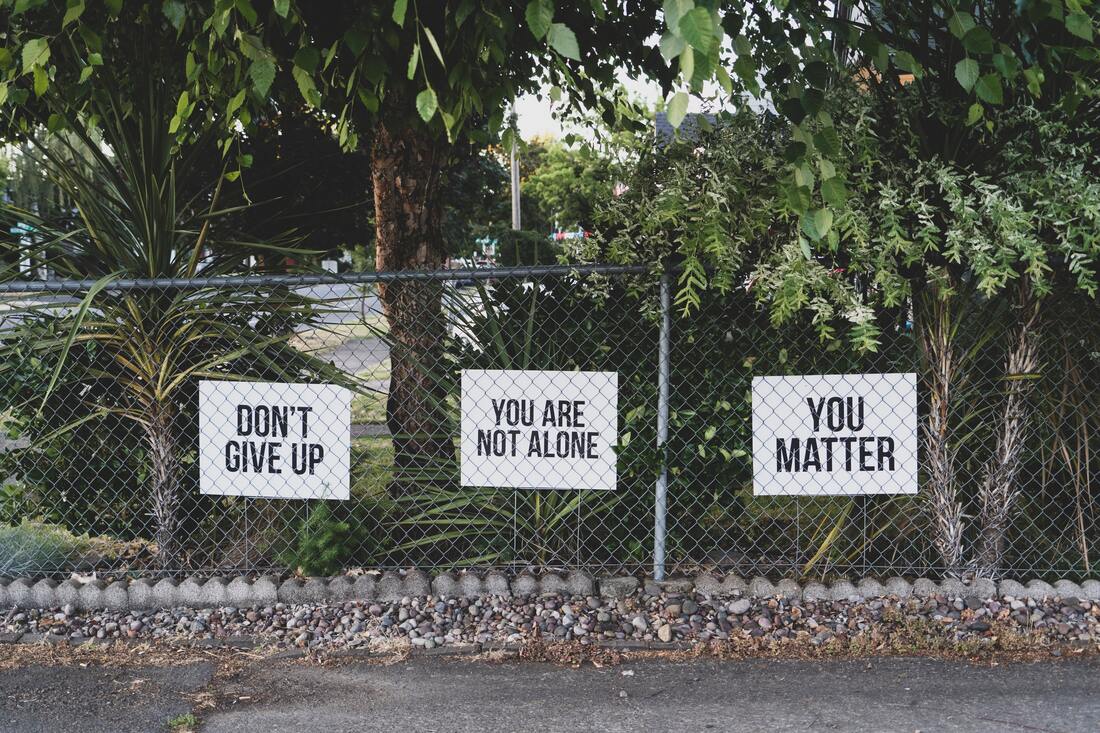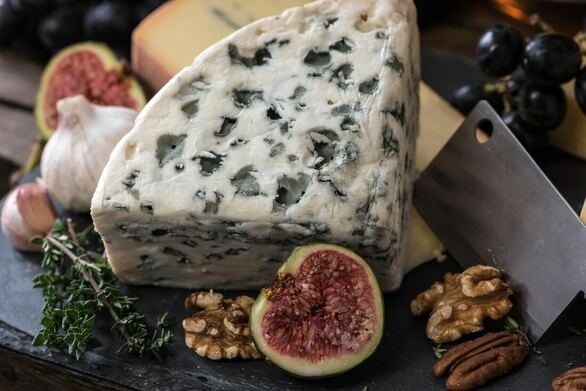|
It takes, on average, five years to diagnose Fibromyalgia according to the National Fibromyalgia and Chronic Pain Association. It took me over forty years to be diagnosed with it. Why? Because I was seven years old when it started after breaking my collarbone. The symptoms were mild enough back at the start that I didn't know any better. It wasn't until they got much worse, in my early forties, that I sought help. And it took five years from that point to get an answer.
Fibromyalgia is a chronic condition that causes widespread pain, fatigue, and tenderness throughout the body. It can also cause other symptoms such as frequent headaches, insomnia, and cognitive difficulties. Someone with fibromyalgia may struggle with daily activities and experience limitations in their daily routine due to their symptoms. They may also have to manage flare-ups, where their symptoms worsen, and adapt their lifestyle to accommodate their condition. Fibromyalgia is a complex condition that can be challenging to diagnose and manage, and those with it often require a combination of medical treatment, lifestyle changes, and support from loved ones to manage their symptoms and maintain their quality of life. The biggest issue I had was with fatigue. Rebuilding strength after dealing with chronic fatigue can be a challenging journey, but it is not impossible. It takes a lot of patience, determination, and a willingness to make some lifestyle changes. However, it is important to start slow and not to push oneself too hard. For someone who has been experiencing chronic fatigue, starting with simple exercises such as walking or gentle stretching can be a good way to begin rebuilding strength. As progress is made, slowly increasing the intensity and duration of the workouts can help to build stamina and endurance. It is also important to prioritize rest and recovery time to allow the body to heal and recharge. With time, effort, and persistence, someone with chronic fatigue absolutely can rebuild their strength and regain a sense of physical wellbeing. The driver for change for me was that if I didn't exercise, my anxiety would build up to epic proportions and I can't tolerate anti-anxiety medications like Xanax (lucky me: Xanax gives me panic attacks,) so exercise was my only hope. For those of you unfamiliar with the work of Dr. John Ratey, I highly recommend his book "Spark: The Revolutionary New Science of Exercise and the Brain." Basically, he says that high intensity aerobic exercise helps reduce anxiety, depression, improves memory, improves learning, helps healthy aging and more. I can tell you how I've overcome fibromyalgia in my life; it's been a multi-pronged approach. Improving my diet, gradually building up my ability to exercise, and reducing stress through energy healing. These days, I help others get the results I developed for myself-- I work one-on-one, in groups, and in no-contact sessions (an email lets clients know what cleared and offers insights into how to maintain the upgrade) to offer a range of affordable choices for people. Join me for my free group energy healing program on Wednesdays at 10am Pacific and learn how to turn your life around.
0 Comments
Do you think thoughts like, "I figured I was the problem" "I felt like a loser" "I thought I deserved what happened to me" "I thought I was lazy" "I thought I was unmotivated"? I can help change your mindset with coaching and energy work. These thoughts are Upper Limit Problems in action, which is the subconscious mind trying to shut us down as we attempt to get ahead.
We get sent the feeling by the child mind as it's trying to protect us from re-experiencing traumatic childhood events. Either we were told we were these things or someone reflected they thought of us this way. The pain of it has our child mind recreating the thought long after the toxic person is gone-- and even loving parents can have toxic moments that stay with us!!!!! Sending it love and saying "I see you Upper Limit Problem, nice try but we're not doing that anymore" is creating the upward spiral towards higher vibration. Figure out your triggers. Your triggers will cause the negative thought spirals to start up. As a people pleaser, I was triggered every time I tried to even consider my needs, let alone prioritize my needs. Needs? Did I even have any? I was utterly blind to them. Women in general and especially we codependent types are taught to deny them to make society work. If you'd like more tools to uplevel your vibration, see me for a private session or ask about joining my upcoming 6 week group session to work on your personal goals. Every day is a brand new day, filled with hope and new possibilities. Let me help you truly believe that. The most elusive of connections is called the Twin Flame. It's like winning the lottery when you find your twin flame, but even then, it's like winning the lottery again if you manage to cut through the intense emotions of the relationship and soul growth required to find a path to marriage. Having successfully done that myself with the help of energy healing I developed, I can say I don't think it would have been possible without it. Now I coach others who are looking for guidance in how to grow themselves spiritually and emotionally to be ready for their twin flame; to learn the emotional lessons required for soul growth the easy way rather than the hard way.
Why See a Twin Flame Coach? 1. Personal Growth and Self-Awareness: At the heart of the twin flame journey is the promise of profound personal growth and heightened self-awareness. A twin flame coach can guide individuals through this transformative process by helping them uncover deep-seated patterns, beliefs, and traumas that may be holding them back. Unlike traditional coaching, which may focus primarily on healing past wounds, twin flame coaching often combines spiritual insight with practical guidance to foster holistic growth. The process not only assists in the union with the twin flame but also promotes individual self-realization and empowerment. It is very hard to successfully connect; our twin flame's strengths are often our weakness, and vice-versa. 2. Navigating the Complex Twin Flame Dynamics: The twin flame journey is notoriously intense and full of complexities. There are stages of running, chasing, and separation, as well as harmonious union. During these phases, individuals often grapple with overwhelming emotions, synchronicities, and spiritual awakenings that can be both exhilarating and confusing. A twin flame coach, familiar with these dynamics, can offer invaluable guidance. As a successfully paired twin flame, I can help make sense of the intense experiences, provide tools and techniques to balance and harmonize the energy between twin flames, and offer strategies to manage the challenges of the twin flame relationship. This kind of tailored support can make the journey less tumultuous and more rewarding. 3. Support and Validation: One of the most significant benefits of seeing a twin flame coach is the sense of validation and understanding they provide. Given the unique and often misunderstood nature of the twin flame connection, individuals can feel isolated, believing that no one truly comprehends what they're going through. A twin flame coach who has been there and gone through the process not only understands the journey but also affirms the validity of the experiences. This kind of support fosters a sense of belonging and decreases feelings of loneliness. Furthermore, the coach can provide a nurturing space for clients to express their feelings, doubts, and fears, helping them find clarity and peace amidst the chaos. Whether you've met your twin flame yet, or want to do the work to call them in, I'd be happy to help. Please reach out via email to me at [email protected] or by phone at 805 - 450 - 7459. I recently had some scar release work done. First time ever… Scar release work gently untangles the intricate web of interconnected fibers within a scar on our body.. You know how we are mostly water? We think we’re solid, but in a lot of ways, we’re more like a water balloon than most people realize. Imagine a water balloon with a scar: the scar tissue creates tension and restriction, much like the knot that holds the water inside the balloon. This is a localized distortion, It appears to be isolated, yet it reverberates throughout the entire system, impacting our posture and pain levels.
Since our bodies are composed of approximately 65% water, they are far from solid; they are dynamic, fluid entities. Scar tissue disrupts this natural flow, causing a ripple effect that can lead to misalignments, discomfort, and limited mobility. By engaging in scar release work, we essentially invite balance back into our body's hydrodynamic equilibrium. Scar release work targets the scar tissue, encouraging it to soften and integrate into the surrounding tissue. As tension is released and the scar becomes more pliable, the entire system begins to respond. Muscles can regain their proper length and tension, joints find their optimal alignment, and fascial planes regain their ability to glide smoothly. This transformation resonates throughout as improved alignment and reduced tension, which leads to a more upright and comfortable posture. Furthermore, the alleviation of strain on surrounding tissues helps to alleviate pain and discomfort, enabling the body to function more efficiently and comfortably. Just as a single knot can affect the shape and movement of a water balloon, scar release work's transformative potential impacts the body as a whole, offering a renewed sense of fluidity, comfort, and balance. In my case, I noticed an immediate impact to my posture, ease of movement, pain, and balance. It was utterly unexpected. You might want to give it a try. How Beliefs Sabotage Test Taking: How to Overcome Test AnxietyWe all have subconscious beliefs that are holding us back. In my work helping students excel at test taking, I've seen lots of beliefs that impact people.
Every client is unique, but here are some of examples of things that have generated negative self-talk which lasts for years until discovered, learned from, and released in session work:
The wonderful thing is that none of my clients have these beliefs working against them anymore. They all exceled on their tests beyond their wildest dreams. Some are lawyers now, some are therapists, some are kicking butt in the businesses they'd started but had been languishing at. Think of how much your hidden beliefs could be costing you per year for the rest of your life. It's so easy to make a huge change; usually five sessions is all it takes. For students, one side benefit is increased GPA too. Think of how much that can impact them in getting into the best schools... Easy sessions that make a lifetime of best achievement and happiness possible. How to Reduce or Eliminate Test Anxiety and Get an 800 on the SAT Math Subject TestI worked with a teenager once who was a good student at a private school, but in timed practice tests for the SAT Math subject test he was only able to get to two thirds of questions, and of those, almost half were wrong. I had him do simple things like putting his right hand to his left knee, then his left hand to his right knee. Then I had him put one hand under his collarbones and the other covering his belly button, then switching hands. I had him unroll the edges of his ears and tug on them.
After completing ten sessions with me, he went on to get an 800 on the SAT Math subject test. Afterward, his grades went up at his high school while putting in the same effort. He applied early decision to the college of his dreams and got in. What was it about those movements that made such an enormous shift possible? This student's challenge was the SAT Math subject test, but we all face struggles in life. It might be trauma, weight gain, addiction, a breakup or something else. Most often, we come up with physical or mental protocols to follow--imposing what our conscious mind is sure will be the solution to the problem--like a diet, or pharmaceuticals, or telling ourselves to have more control. Those movements I had my client do were meant to help me assess what the body needed by letting it tell me itself. The work I do is a combination of simplified acupressure, chiropractic, and brain training. I could see from the testing that he had activated primary reflexes. I could also see that he needed help with balancing energy flow in his body--two meridians were underactive. His gait reflexes (which help with automatic patterns of walking and running) were off, which meant brain power meant for answering test questions was being used for keeping him safe while moving. Even little things, like shifting side to side as I tested a movement pattern, told me how he was having to compensate to move safely, rather than it being automatic. Once I reset everything, I did brain training to develop synaptic connections and myelinate them in an optimal way. Increased synaptic connections and myelination allows for faster processing speed--in essence, free extra time to think. That's invaluable on a test--or when driving, or at work, or in a social situation. Processing speed is one measure of intelligence. We repeated this three times a week for a total of ten sessions, finishing the month before his test to allow him some time to integrate the work. Another client, a child, couldn't handle being in the shower. Every night was torture for him, and for his family, to have to go through the process of having him take a shower. (He had PTSD from an incident in a bathroom.) In asking his body for answers using muscle testing, it turned out that he was in shock. It's possible in acupressure to bring up past events and visualize them in a line from the present to the past, so that we can clear them all at once. Later that night, he showered for the first time without complaint. Same thing the night after, and the night after that, and on and on. It was the end of that being an issue for that little boy and his family. For another client, a college student, the goal was to improve motivation, reduce procrastination, paralysis, and perfectionism. She struggled with the feeling that if one thing wasn't good, then nothing was good. Her body wanted brain reactivation so she could could heal at a higher level. We cleared holographic perception, linear tracking, sound interpretation, and visual interpretation using acupressure as directed by the response to testing the body. The student felt immediate stress relief and was able to do well on midterms, finishing in the top of her class. Another wanted help with her chronic pain. The body was able to express its need for brain reactivation, as well as balancing the energetic body through clearing chakras--areas of the body with high levels of nerve impulse traffic--that had gotten stuck in overdrive. She also needed work to deactivate primary reflexes. Over the course of fifteen sessions, she was able to see improvements and stay more and more positive about her ability to stay grounded in the moment. She stopped letting the fear of the potential for pain ramp up her pain reaction, and over time, spent less and less time in pain. I'm able to get the results I have for clients because I've realized that we overcome our greatest struggles not by imposing protocols on ourselves, but asking the body what it needs to heal. It was what worked for me to heal me from chronic illness. If you or a loved one needs help with testing, motivation, letting go of perfectionism, and a whole lot more, consider session work with me. We can ask your body what it needs to heal instead of imposing a regimen on it. Quick results and a happy mindset are yours as a takeaway. Healing from FibromyalgiaMost of the blogs I see about fibromyalgia are all about how you live with the disease. Yeah, that's not me. I'm the type to pick at the bandaid. To chafe to be free of it. A friend of mine had a husband who was prescribed the same pain medicine prescribed for me; one of the side effects was growing tumors, which kept me from taking it. I always seemed to have problems with side effects and was too scared to try it. He took it, and developed a tumor at the site of the injury he was taking the pain medication for. He died of that tumor after it metastasized to his brain. I couldn't take NSAIDs for pain relief either so I was in a lot of pain over the years, which made me highly motivated to solve the problem.
I noticed some interesting things about that pain because I was forced to live with it:
What made the pain better?
Check out my YouTube channel for videos on how to do some simplified acupressure for emotional release. The most helpful type for me was and still is PanHarmonic Healing (PHH.) If you find it helpful and want to learn more, I teach PHH. Believe in yourself. You have the ability to heal. The biggest thing you can do is be as kind to yourself every day as you can. We all have trauma; life can be hard. Your childhood trauma is active until you integrate it. You can do it, bit by bit. Self love and self kindness is key. With love, Elizabeth "Who Moved My Cheese" is an insanely popular book, selling over 26 million copies at last count. It's an easy read, and it gives great insights into how the different parts of our minds react to change, allowing us to step in and help ourselves along the path as we cope with our fear of change. Cheese is a metaphor for happiness and success.
Some of us who've had traumatic childhoods can identify with the teachings in this book: "If you do not change, you can become extinct." I learned this one the hard way. A traumatic childhood can lead to fear and caution. The more one is on the alert, the more we can find to fear. Eventually, we can exhaust the body. Our adrenals crash and burn. Our health suffers. We often develop chronic illness. "The quicker you let go of old cheese, the sooner you find new cheese." We often have a hard time accepting change because the old way is comfortable and familiar. New ways of doing things can seem threatening to our unconscious, but we are here to work through healing our childhood wounds, and must learn how to become more flexible. If not, see above. We can exhaust the body and develop illness. "What would you do if you weren't afraid?" The old me would have had no idea the answer to this one because I was always afraid until I started learning a type of specialized kinesiology- a form of acupressure- called PanHarmonic Healing® back in 2014. It has completely changed my life. Why hasn't everyone who lives with anxiety, depression, anger or any other emotional issue taken classes in PanHarmonic Healing? Because it is new cheese. People want to stick to old cheese when they are stuck in their primitive and emotional brain. I understand. I did too until I got so sick I started to feel like I was dying. That made me open to trying to new things. "When you stop being afraid, you feel good!" I thought I needed to be afraid to make sure I was safe, but I was totally wrong. It feels amazing to stop being afraid! If you suffer from anxiety, take baby steps towards giving up fear. I found that fear is an addiction, just as much as alcohol or drugs are. I had to lay down that pattern to step into the life I wanted to lead. It was hard-- I was rewarded for being afraid, and my marriage ended when I stopped being afraid--but the life I have now is beyond anything I could have dreamed before. The effort I made has repaid itself countless times over the years. "Imagining yourself enjoying yourself with your new cheese leads you to it." This is a Law of Attraction concept, one that I highly recommend practicing. We call in what we are visualizing. The only thing that interferes with this is that our old emotional holdings are broadcasting signals to the world that people react to on an unconscious basis. In other words, it's taken both visualizing and cleaning up old emotional baggage using acupressure to get me the results that I've wanted. "Old beliefs do not lead you to new cheese." So true. Old beliefs keep us stuck in old patterns, preventing growth and happiness. The problem was that- pardon my language- sometimes I sucked at believing new beliefs. It just felt impossible to change sometimes. The compromise I worked out is that when I find myself not believing the new beliefs--usually some form of believing that I could change or that the situation could change from what I'd always encountered-- I would instead work on not knowing the outcome of a situation. Being certain of an outcome is the way we call in the old ways. Being open to not knowing allows the Universe to work its magic just as visualizing does. It's an interim step to being good at visualizing. "When you see that you can find and enjoy new cheese, you change course." This is also helpful to know because the more we change, the more we are able to change. The increased rate of change can feel so rewarding. You've worked hard to unlock a better future; you've earned it! "Noticing small changes early helps you adapt to the bigger changes that are to come." Yes, noticing small changes early helps us expect and then plan for change. And far better to learn to adapt than to resist change. I look to change old patterns that aren't serving me wherever I can--one way is to change up the routes that I drive. What are the ways you adapt to change? I hope these quotes from the book inspire you to grab a copy of Who Moved My Cheese? today. It's a great book and can be an invaluable life tool. And I hope I've helped explain PanHarmonic Healing a little better. It's something I teach, most recently at the 2019 Brain Gym® (Breakthroughs International®) conference in San Diego. Insulin is a hormone produced by the pancreas. It is made in response to the foods that we eat. It helps keep our blood sugar levels just right.
As we age, we can become less sensitive to insulin. Doctors call this insulin resistance. If we've got insulin resistance, even foods considered healthy like oatmeal or fruit cause more and more insulin to be produced. We get sleepy after a meal with carbohydrates when we are insulin resistant, even if they are healthy foods. Why? Because too much insulin means our brain doesn't get enough of its fuel: glucose. It damages our brain to not have the glucose it needs. It increases our risk for dementia and Alzheimers according to research.1 There are ways to reverse this problem:
You can support your insulin sensitivity by adding a tablespoon of apple cider vinegar to a glass of water every day, by eating sauerkraut, and making sure you eat soluble fiber, among other things. Ignoring insulin resistance can set us on the path to Type 2 diabetes and Alzheimer's disease. My mother died of Alzheimer's disease in 2014, so this issue is close to my heart. I was diagnosed with metabolic syndrome in my early forties. This was a part of my motivation to lose weight and begin a regular exercise program. I started doing hot yoga, increasing to three times a week, which I have kept up since 2011. I no longer have metabolic syndrome, but I have also had to switch to a paleo/modified Mediterranean diet in order to stay at a healthy weight. My other motivation was watching my beloved mother-in-law die of pancreatic cancer. She did not eat a healthy diet in the twenty years that I knew her. Ultimately, she didn't have the building blocks needed to stay healthy. It's important to eat nutrient dense foods that rank high on the ANDI scale. If you have a history of antibiotic use, NSAID use, PTSD, or childhood trauma, you are at higher risk for leaky gut. If you have leaky gut, you need to make sure you are not eating foods too high in oxalate, a toxin produced by plants to prevent overgrazing. Even very healthy fruits and vegetables can be high in oxalates. People with a healthy intestinal tract absorb 1-2% of dietary oxalates, but people with leaky gut can absorb up to 50% of dietary oxalate. A good group to find out more about this is called Trying Low Oxalates, started by Susan Owen. She's got a group on Facebook, as well as one on Yahoo. For ease of use, I recommend the Facebook group. Here's to your health, Elizabeth Remember, Elizabeth is not a doctor. Suggestions given on this blog are no substitute for medical advice from a licensed physician, and are only meant as discussion points with your doctor. 1. Insulin Resistance and Alzheimer's Disease: Bioenergetic Linkages Additional reading: Dr. Jill Carnahan's blog post Another shooting incident at a high school leads to the by now all-too-familiar triage of support trying to cope with the aftermath. But it's not enough:
"Among kids exposed to traumatic violence, short-term symptoms immediately after such incidents include trouble focusing, managing emotions, and negotiating relationships. The effects of childhood trauma also show up later in life: As adults, children who witnessed violence will be more likely to suffer from depression, deal with substance abuse, and struggle with obesity."1 The long-term effects include far more than the few listed. As adults, those of us exposed to traumatic violence are more likely to suffer from illness, anxiety, employee absenteeism, and ultimately a shortened lifespan. It raises our risk levels on the ACE test, a test of childhood adversity. Why? Because these events are locked in our body until we process and release the emotional learning around them. Emotional learning is the most important evolutionary advantage for a social species like humans, and not one drop of it is wasted. We're not taught how to learn emotionally; in fact, we are taught to stuff emotions and move on. These emotions are neurochemicals that lodge in our bodies. In quantity, neurochemicals are inflammatory and inflammation leads to disease, so we're more likely to develop illness if we have traumatic backgrounds. Still, people self-medicate. Delving into the unconscious seems too scary. But what if you could easily learn from emotions? What if they're not just a hodgepodge of random, tangled-up bad feelings? What if feeling them reduces your stress? What if doing this allows you to do better on tests, perform better at work, reduces pain, reduces the amount of time you spend sick, and increases your emotional intelligence? That's what I've found acupressure does. I've used myself as a guinea pig. I'm a poster child for childhood trauma; my dad was an active duty US Air Force C-130 pilot in the Vietnam War and I was born during the war. I was constantly sick, I had chronic Epstein Barr, I had leaky gut, I had an autoimmune illness. I'm convinced this is what humanity needs to keep evolving: spending more time in the cortex and prefrontal cortex. Stress puts us into the brain stem and emotional brain. It has us in survival mode. Success belongs to those in cortex-mode, which is executive thinking. Care to try it? Check out my YouTube channel. I demonstrate some basics that will have you making improvements in your quality of life immediately. I also teach it. You can sign up for one class or for the series. Check out my classes in PanHarmonic Healing® here, in Brain Gym® here, and in Touch for Health here. I think all three make the best combination for self-healing I've found. For most of us, childhood held some trauma. Why not give yourself the gift of freedom from the past? You'll still be yourself; you'll just get to spend more and more time in a good head space, relaxed, and experiencing more joy than you thought was possible. |
AuthorElizabeth Morse Archives
January 2024
Categories
All
|








